Abstract
Solutions of BeSO4 were added to soluble macromolecules and the mixtures brought to neutrality. Under appropriate conditions much of the beryllium did not precipitate out as insoluble hydroxides but became attached to naturally occurring sulphated proteoglycans and polysaccharides (e.g. heparin, chondroitin sulphate, fucoidan, etc.) and to synthetic, sulphonated aromatic dyestuffs (e.g. trypan, Evans and Coomassie blues, Suramin, etc.). At physiological conditions of pH and ionic strength, these addition compounds were relatively stable and did not dissociate during dialysis. When such materials were injected s.c. into sheep (in doses containing about 50 micrograms Be), rapid lymphoproliferative responses took place in the regional nodes so that immunoblasts appeared in the efferent lymph in numbers that exceeded those provoked by powerful conventional antigenic stimuli. Significant amounts of the injected materials passed through the nodes and, in intact animals, became systematized. A method was devised for attaching beryllium to particulate carriers, such as lymphocytes or red cells that had been fixed with glutaraldehyde. The injection of suspensions of such materials also provoked vigorous immunoblastic responses, but the particulate materials did not pass beyond the regional node. In the doses usually used, none of these materials was grossly toxic and they may be suitable for consideration for development into a new type of immunostimulator cum adjuvant.
Full text
PDF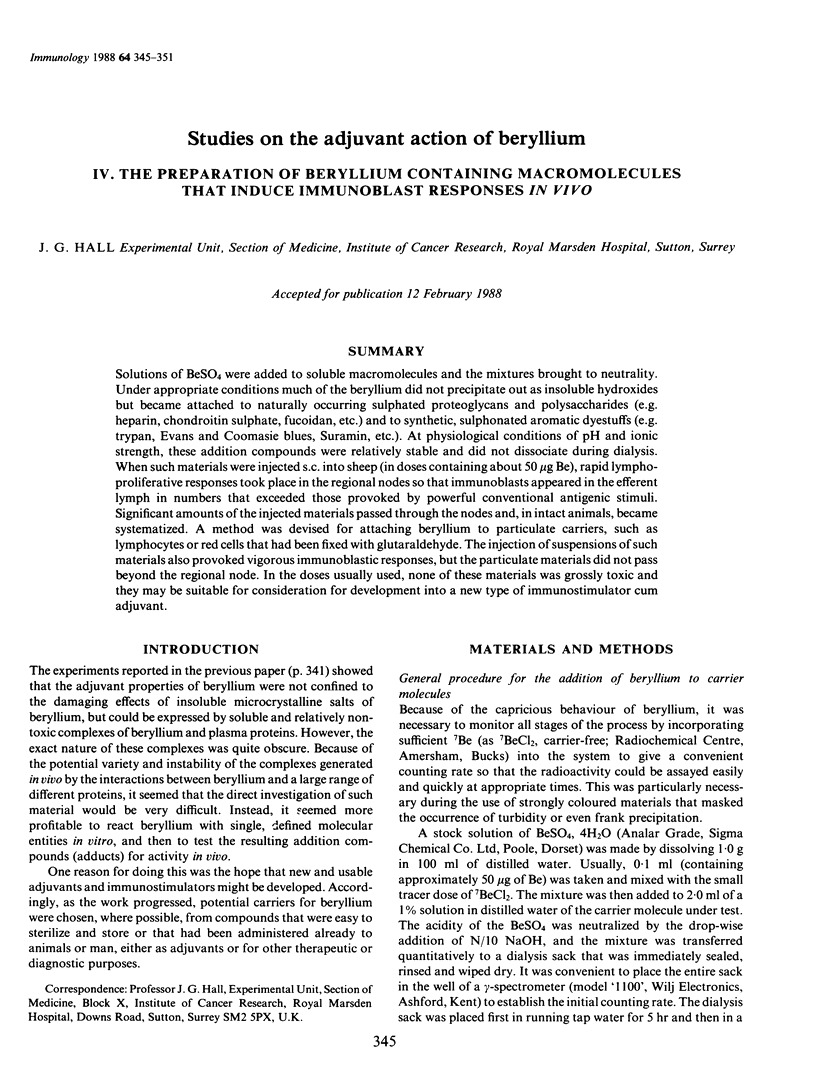

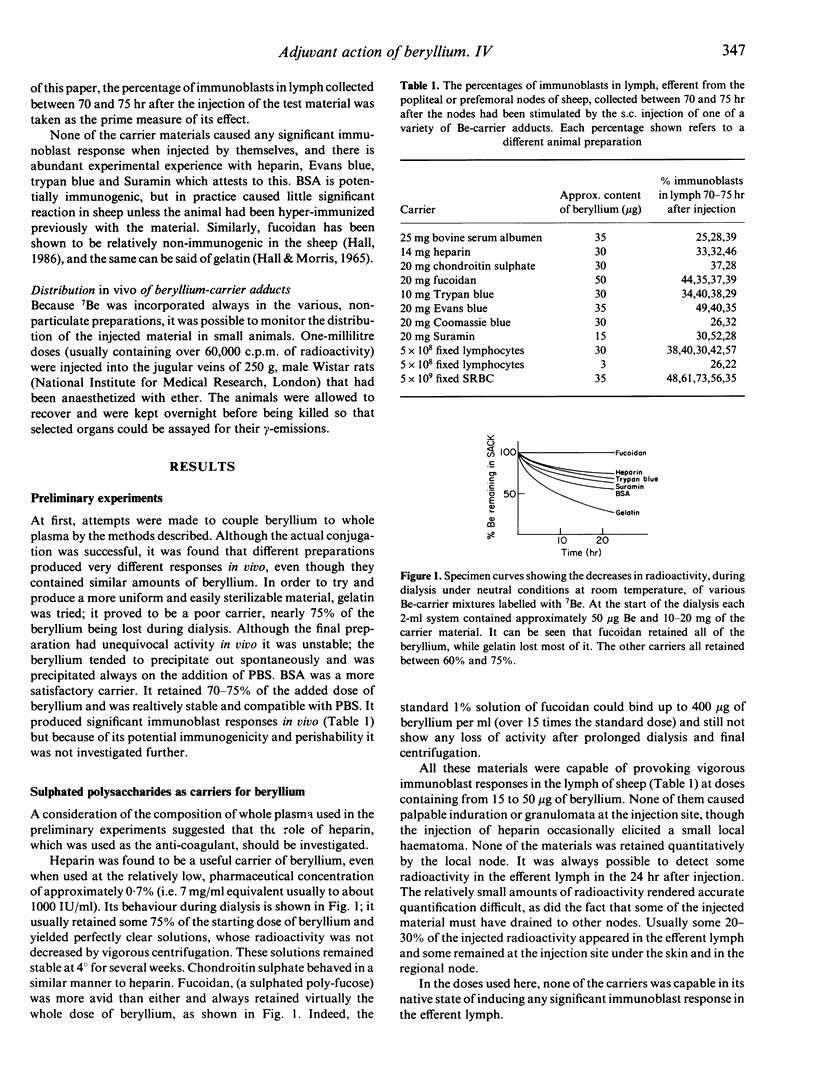
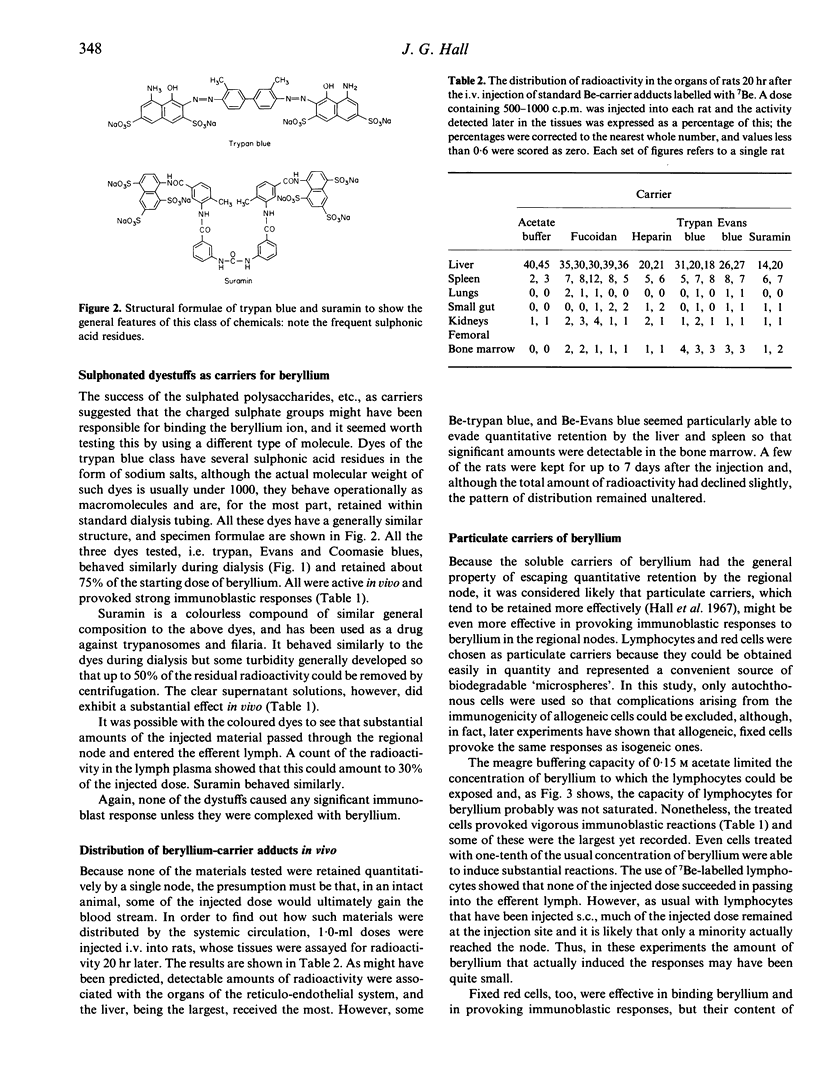
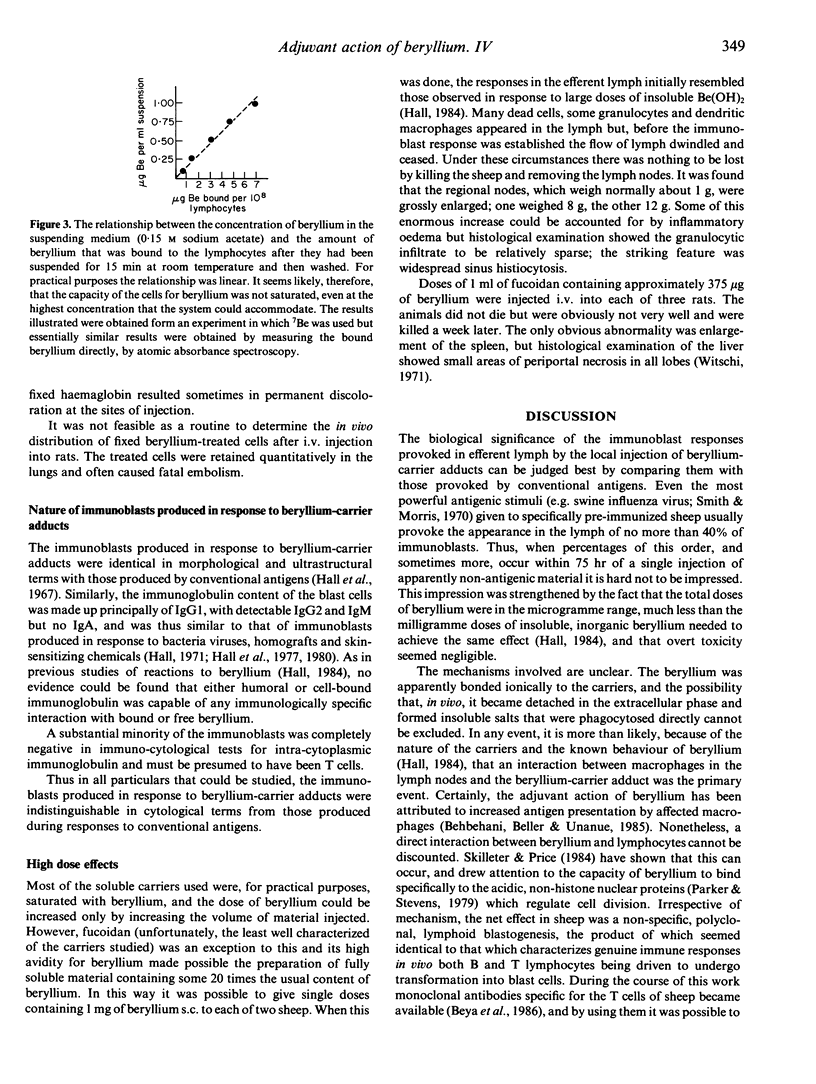
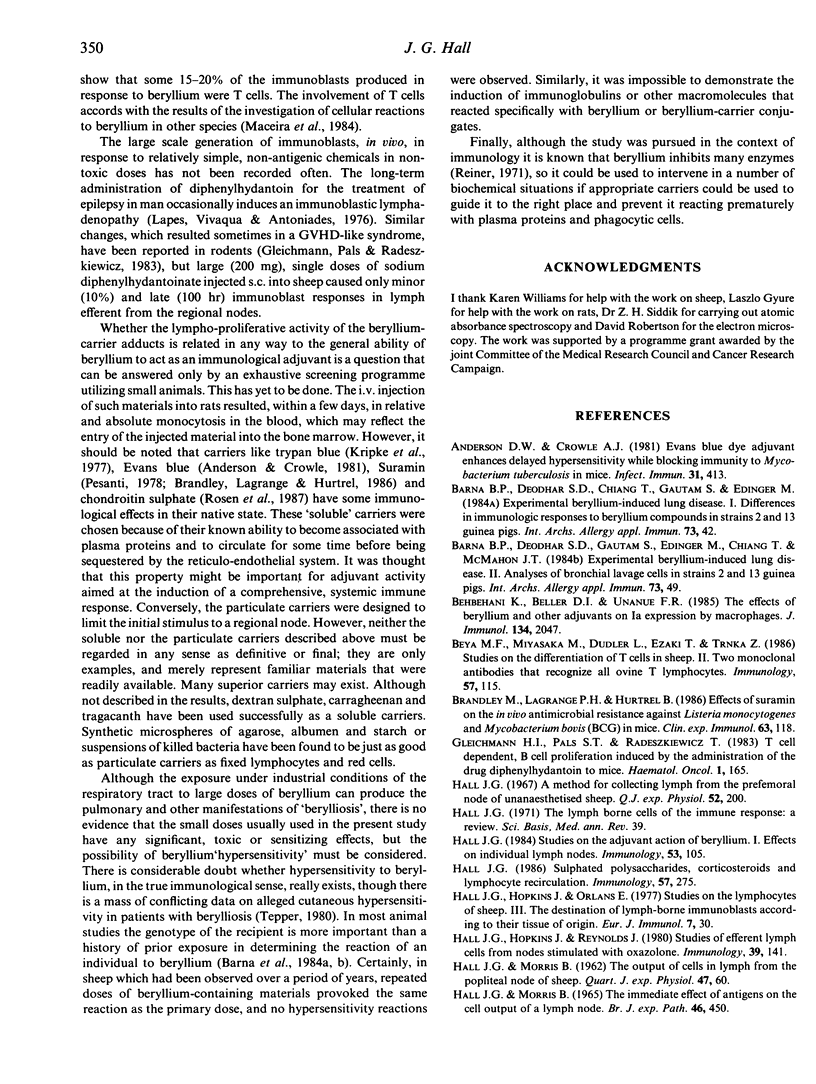
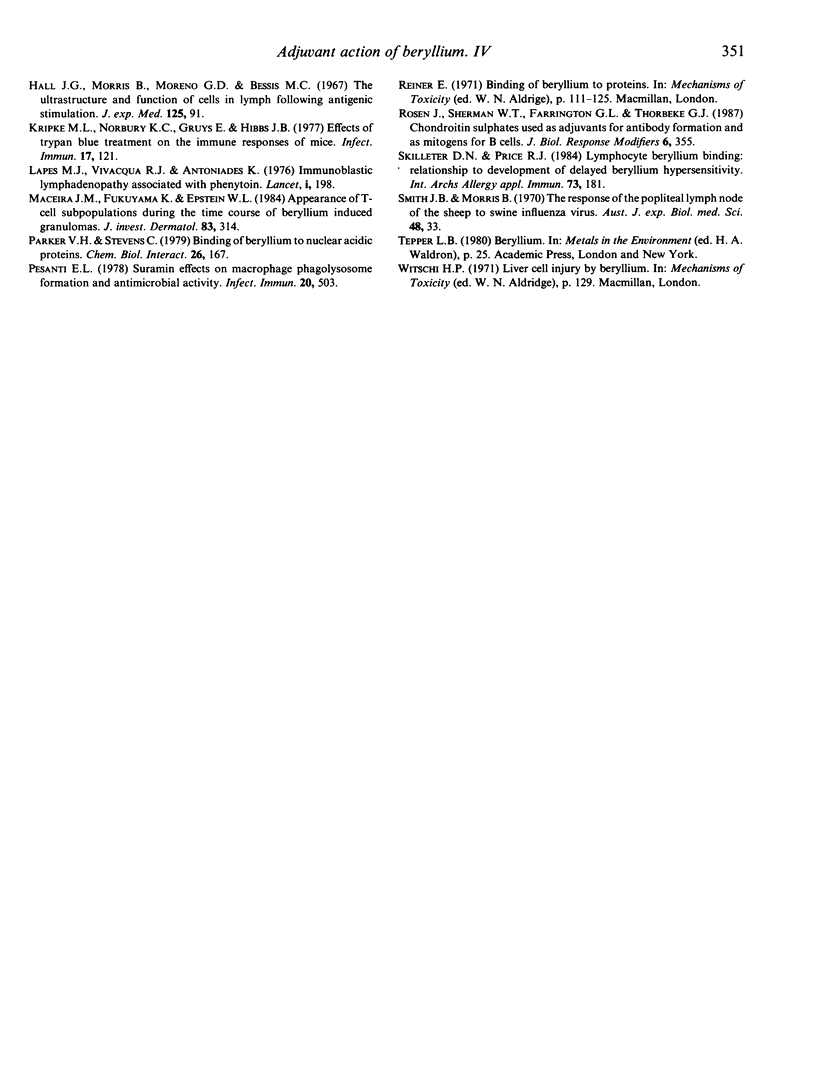
Selected References
These references are in PubMed. This may not be the complete list of references from this article.
- Anderson D. W., Crowle A. J. Evans blue dye adjuvant enhances delayed hypersensitivity while blocking immunity to Mycobacterium tuberculosis in mice. Infect Immun. 1981 Jan;31(1):413–418. doi: 10.1128/iai.31.1.413-418.1981. [DOI] [PMC free article] [PubMed] [Google Scholar]
- Barna B. P., Deodhar S. D., Gautam S., Edinger M., Chiang T., McMahon J. T. Experimental beryllium-induced lung disease. II. Analyses of bronchial lavage cells in strains 2 and 13 guinea pigs. Int Arch Allergy Appl Immunol. 1984;73(1):49–55. [PubMed] [Google Scholar]
- Behbehani K., Beller D. I., Unanue E. R. The effects of beryllium and other adjuvants on Ia expression by macrophages. J Immunol. 1985 Apr;134(4):2047–2049. [PubMed] [Google Scholar]
- Beya M. F., Miyasaka M., Dudler L., Ezaki T., Trnka Z. Studies on the differentiation of T lymphocytes in sheep. II. Two monoclonal antibodies that recognize all ovine T lymphocytes. Immunology. 1986 Jan;57(1):115–121. [PMC free article] [PubMed] [Google Scholar]
- Brandely M., Lagrange P. H., Hurtrel B. Effects of suramin on the in vivo antimicrobial resistance against Listeria monocytogenes and Mycobacterium bovis (BCG) in mice. Clin Exp Immunol. 1986 Jan;63(1):118–126. [PMC free article] [PubMed] [Google Scholar]
- Gleichmann H. I., Pals S. T., Radaszkiewicz T. T cell-dependent B-cell proliferation and activation induced by administration of the drug diphenylhydantoin to mice. Hematol Oncol. 1983 Apr-Jun;1(2):165–176. doi: 10.1002/hon.2900010207. [DOI] [PubMed] [Google Scholar]
- Hall J. G. A method for collecting lymph from the prefemoral lymph node of unanaesthetised sheep. Q J Exp Physiol Cogn Med Sci. 1967 Apr;52(2):200–205. doi: 10.1113/expphysiol.1967.sp001902. [DOI] [PubMed] [Google Scholar]
- Hall J. G., Hopkins J., Orlans E. Studies on the lymphocytes of sheep. III. Destination of lymph-borne immunoblasts in relation to their tissue of origin. Eur J Immunol. 1977 Jan;7(1):30–37. doi: 10.1002/eji.1830070108. [DOI] [PubMed] [Google Scholar]
- Hall J. G., Hopkins J., Reynolds J. Studies of efferent lymph cells from nodes stimulated with oxazolone. Immunology. 1980 Feb;39(2):141–149. [PMC free article] [PubMed] [Google Scholar]
- Hall J. G., Morris B., Moreno G. D., Bessis M. C. The ultrastructure and function of the cells in lymph following antigenic stimulation. J Exp Med. 1967 Jan 1;125(1):91–110. doi: 10.1084/jem.125.1.91. [DOI] [PMC free article] [PubMed] [Google Scholar]
- Hall J. G., Morris B. The immediate effect of antigens on the cell output of a lymph node. Br J Exp Pathol. 1965 Aug;46(4):450–454. [PMC free article] [PubMed] [Google Scholar]
- Hall J. G. Studies on the adjuvant action of beryllium. I. Effects on individual lymph nodes. Immunology. 1984 Sep;53(1):105–113. [PMC free article] [PubMed] [Google Scholar]
- Hall J. G. Sulphated polysaccharides, corticosteroids and lymphocyte recirculation. Immunology. 1986 Feb;57(2):275–279. [PMC free article] [PubMed] [Google Scholar]
- Kripke M. L., Norbury K. C., Gruys E., Hibbs J. B., Jr Effects of trypan blue treatment on the immune responses of mice. Infect Immun. 1977 Jul;17(1):121–129. doi: 10.1128/iai.17.1.121-129.1977. [DOI] [PMC free article] [PubMed] [Google Scholar]
- Lapes M. J., Vivacqua R. J., Antoniades K. Letter: Immunoblactic lymphadenopathy associated with phenytoin (diphenylhydantoin). Lancet. 1976 Jan 24;1(7952):198–198. doi: 10.1016/s0140-6736(76)91307-6. [DOI] [PubMed] [Google Scholar]
- Maceira J. M., Fukuyama K., Epstein W. L. Appearance of T-cell subpopulations during the time course of beryllium-induced granulomas. J Invest Dermatol. 1984 Nov;83(5):314–316. doi: 10.1111/1523-1747.ep12264096. [DOI] [PubMed] [Google Scholar]
- Parker V. H., Stevens C. Binding of beryllium to nuclear acidic proteins. Chem Biol Interact. 1979 Jul;26(2):167–177. doi: 10.1016/0009-2797(79)90020-6. [DOI] [PubMed] [Google Scholar]
- Pesanti E. L. Suramin effects on macrophage phagolysosome formation and antimicrobial activity. Infect Immun. 1978 May;20(2):503–511. doi: 10.1128/iai.20.2.503-511.1978. [DOI] [PMC free article] [PubMed] [Google Scholar]
- Rosen J., Sherman W. T., Farrington G. L., Thorbecke G. J. Chondroitin sulfates used as adjuvants for antibody formation and as mitogens for B cells. J Biol Response Mod. 1987 Jun;6(3):355–366. [PubMed] [Google Scholar]
- Skilleter D. N., Price R. J. Lymphocyte beryllium binding: relationship to development of delayed beryllium hypersensitivity. Int Arch Allergy Appl Immunol. 1984;73(2):181–183. doi: 10.1159/000233461. [DOI] [PubMed] [Google Scholar]
- Smith J. B., Morris B. The response of the popliteal lymph node of the sheep to swine influenza virus. Aust J Exp Biol Med Sci. 1970 Feb;48(1):33–46. doi: 10.1038/icb.1970.4. [DOI] [PubMed] [Google Scholar]


